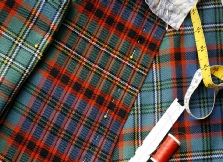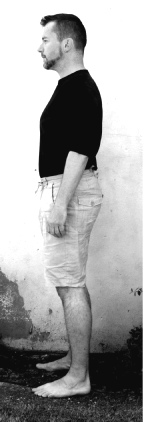Traditional and contemporary kilts sewn to order
Paul Henry Kilts

Each kilt is tailored to the individual wearer,to make a properly fitting kilt, the wearer's measurements must be known .
Please get a friend to help with the measuring, it really is difficult to do it yourself correctly.
1: Kilt waist .Traditionally styled kilts sit high, above the usual trousers waist .Take a firm measurement of the waist at navel line. This is usually slightly larger than a typical trouser waist measurement - please be honest! Otherwise your kilt might not fit well.
2: Seat Take a slightly loose measurement around the largest part of the seat, you should be able to move the tape easily, it’s best that this is a generous measurement to allow the greater comfort and swish in the the wearing
3: Kilt drop-Length of kilt
The length of a kilt is often debated, but generally should not be lower than the centre of the knee cap.
One way to measure correctly is to kneel on the floor, and with a straight back, measure from the navel line to the floor, and then subtract 1” , don’t lean forward as this will alter the measurement. You can check this by standing up and checking the length in a full length mirror. Please note that is not actually the finished length of the kilt, as I will add an extra measurement to make the rise , please just measure from the navel line.
There is waist adjustment room within every kilt, there could be up to as much as 3” ,but it is the waist measurement which is the guiding one, if you are likely to be losing (or gaining) weight please let me know and I can allow for that.
If you have any doubts or questions about any of these measurements please do not hesitate to contact me

Kilt Waist
Kilt drop
Seat
How to Measure
| past events |
| traditional |
| contemporary |
| Making a kilt |
| fabric |
| style |
| measuring |
| prices and ordering |
| Special offers |
| extras and gifts |
| alterations |
| Harris Tweed |
| Everyday tweeds |
| supplied fabric |
| sock cuffs |
| knitted garters |
| tartan notebooks |
| lavender bags |
| kilt aprons |